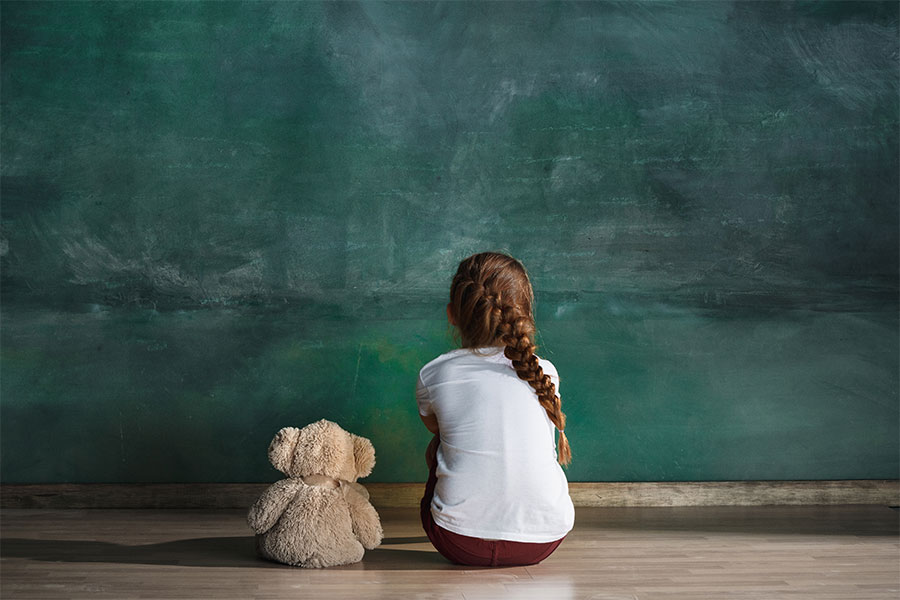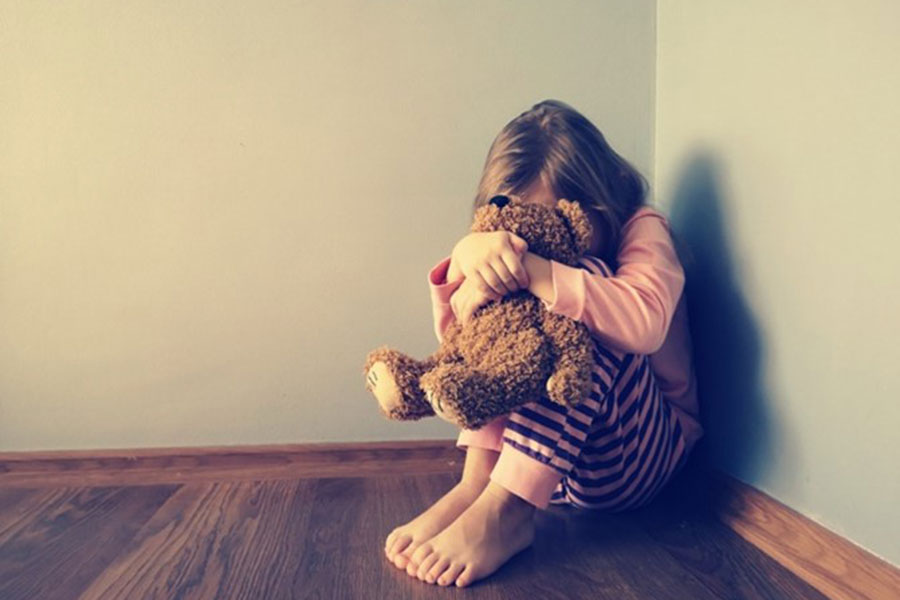Recognising the signs of poor mental health
The only certainty about mental health is that we all have it. If we imagine it as a swinging pendulum, throughout our lifetimes, our mental health moves between good mental well-being and poor mental well-being, depending on life circumstances, events and situations. Everyone can have days when their mental health feels more sensitive, but for some, realising that their mental health is suffering and needs support can be a shock.
For children and teenagers, brain development is ever-changing and moving, children’s pre-frontal cortex – the part of the brain that supports rational thought, seeing perspectives, solving problems and regulation continues its development throughout childhood and adolescence. So, we cannot expect our children to know how to manage their own feelings without guidance and support.
In addition, as their primary responses come from their limbic brain system we can often see strong emotions, reactive and instinctive responses to issues – and not always the behaviours that we want to see. This can mean that we focus more on the behaviour, rather than the feeling as the behaviour is what we SEE. The important part of this to remember is that the more children use those logical, rational and are taught to regulate and talk about their emotions, the strong those pathways in their brains will grow – so by supporting them consistently from a young age we can best prepare them for adulthood, and support the development of resilience and coping strategies which will support their mental health as they get older.
So, how do we keep an eye on the mental health of our children and teenagers?
Poor mental well-being has a catalogue of signs and symptoms, and no two children will present with identical issues. However, there are core signs that we can be aware of that may indicate our children need a helping hand to process what is happening in their minds:
- Complaining of tummy aches or feeling nauseous
- Complaining of headaches or being ill
- Making excuses to not attend/avoiding particular places or people
- Not wanting to leave the house
- Being frightened of things
- Worrying about things frequently
- Needing to follow rituals or comfort routines to cope
- Always needing to know what is happening
- Controlling behaviours
- Panic attacks
- Issues falling asleep or staying asleep
- Frequent nightmares
- Getting angry or explosive at suggestions
- Telling lies or hiding things
- Eating more or less than usual
- Sleeping more or less than usual
- Complaining of feeling sad or hopeless
- Commenting that no one likes them
- Difficulty concentrating
- Change in performance at school with no known reason (e.g. change of teacher)
- Lack of interest in activities or friends that they previously loved
- Changing their appearance or clothes
- Zoning out or hiding away
- Attention seeking behaviours
- Frequent mood changes
- Regressing to old stages of development – bed wetting, thumb sucking
A child may have one, or many of the above symptoms. They may also have different ones, but there will be a theme that there will be behaviours that you previously did not find them exhibiting.
What can trigger mental health symptoms to start?
Depending partly on a child’s resilience will determine whether a trigger impacts a child. For instance, for one child, moving house can cause their world to crash down around them, for another it is a walk in the park. Equally, from my work as a therapist, for some children, the impact of a trigger may not be seen for 3-24 months after an event (sometimes longer).
Some core events that can trigger changes in mental health include (not exhaustive):
- Moving house
- New sibling
- Loss of a loved one, including pets
- New school or change of school
- Loss of a friend (moving away, illness, death)
- Long periods of illness
- Parent experiencing long term illness, including mental health issues
- Parent separation
- Rejection from a loved one, parent or carer
- Bullying
- Witnessing a traumatic event
- Hearing a traumatic event
- Being the victim of abuse or neglect
- Growing up in a household where domestic violence occurs
- Experiencing uncontrollable events
- Multiple changes in a short period of time
 Different children – different reactions
Different children – different reactions
When changes occur, the brain reacts from the amygdala – it’s threat sensor. If an event causes fear in a child, then it reacts with a fight-flight-freeze-faint response.
Children may fall into different response categories:
- Some children may feel able to bottle the emotions up
- Others may express them early on through behaviours or habit-based reactions
- Some may continually talk about the problem, needing continual reassurance and support
- Others may appear to sail through the event at the time, perhaps with you commenting ‘how amazing they have been’ for them to respond months or years later once the world has ‘settled down’
- Whilst some will process, question and manage the event and have no lasting issues
There is no right or wrong, children’s coping mechanisms depend on their resilience, their development and their support systems. A child who is left in a state of fear, learns that fear is a normal response. Whilst, a child who learns that they will be supported and helped will learn to reach out. The focus needs to be on how we support and work with that child long term to help them to process and move on from the event with positive coping strategies.
So, how can we help them?
- Work with them to solve problems (don’t do it for them) – Children who experience anxiety or worries most often feel ‘out of control’ which is why their emotions escalate when they have ideas or changes thrown at them. Working with children to help them to find solutions to their own problems therefore helps them to develop stronger pathways in the pre-frontal cortex of their brain, which then helps them to regulate their feelings. This also supports them to develop resilience and feel that they can cope, as they have a set of options that they can refer to when faced with a difficulty. Equally, by involving children in finding solutions to their worries and challenges they are encouraged to talk through what is bothering them, which increases their positive coping mechanisms, teaching them that they can rely on trusted adults to help them when they are in difficulty.
- Role model it – what you want to see – show it! –Children learn their emotional responses from what is modelled TO them and WITH them. If they consistently watch the core carers in their world manage their emotions and difficult situations by slamming doors, raising voices and walking out the house – they learn that this is a strategy that they can rely on. Therefore, to support children to better manage their own mental and emotional well-being we need to be open to working on ourselves and to ensure that we role model positive and healthy coping strategies. Whether it is talking it out, self-care, talking to a therapist or using exercise and healthy eating to practicing meditation and relaxation teaching children starts with role modelling it.
- Be consistent with your responses –If children can be certain that they will get a consistent response to communicating their worries, they are most likely to learn to express their concerns and be open to help. Consequently, if a child is told that they are stupid, pathetic, weak or silly for having difficulty with their mental health then they are less likely to ask for help and most likely to put the walls up and shut down. Being considered in our responses is therefore vital. Think of a friend who you go to with your problems, most likely, you thought of them because they are always open, considerate, caring and empathetic. Exactly what children need to be responded with.
- Keep routines consistent and tight –All children, just like adults, thrive in consistency. Our brains, neurologically work on a pattern based system and when we experience the familiar our brains adjust quickly and easily. If we consistently know that we will be met with similar responses, support and help then anxiety is lessened. If a child knows that their home, routines and lives follow generalised patterns, they will feel more secure which then allows them to be in the best situation to manage and process emotions and be accepting of help.
- Boost self-esteem and self-worth –When children are having struggles with their mental health, their self-esteem and self-worth equally take a hit. Therefore, we need to focus on supporting them to recognise their worth, skills and achievements. This can be as simple as offering praise when things ae done well, gratitude for help and encouragement to do things to build a sense of belonging and purpose. When your child achieves a new goal, make a fuss, praise them and tell them how proud you are to positively reinforce the behaviour. Praise and encouragement set off feel good emotions and the more you praise the behaviours and feelings that are positive the more you are supporting them to keep a recognition of their positives.
 When do we need wider help?
When do we need wider help?
If your concerns about a children are not shifting, have been occurring for a longer period of time (more than a few weeks) or are increasing in their intensity you should seek medical advice.
 Further help
Further help
For more articles about mental health visit – https://dandeliontraininganddevelopment.com/articles-resources/
To learn more about child and adolescent mental health visit – https://dandeliontraininganddevelopment.com/courses/
For resources to support child and adolescent mental health visit – https://dandeliontraininganddevelopment.com/shop/
© Dandelion Training and Development – All Rights Reserved

